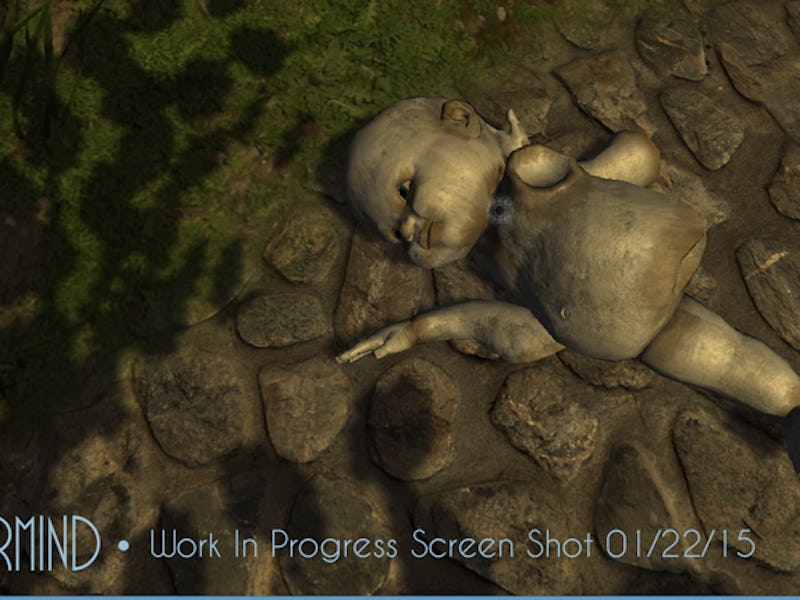Oculus Rift Game 'Nevermind' Uses Biofeedback to up the Stakes
Survival of the calmest.

The input-output dynamic of most games is fairly simple: You steer with a keyboard, gesture, or some other type of gamepad, and the game adjusts the audio or visual output and perhaps vibrates the controller. But with her Kickstarter-backed Oculus Rift game Nevermind, Erin Reynolds wants to upend the dynamic, making the relationship between game and player a roundabout instead of parallel streets. The trick to survive in Nevermind? Don’t get stressed out, or biofeedback sensors will register your anxiety and make the game tougher to beat.
Here’s how Reynolds delves into the black heart of Nevermind on game developer blog “Gamasutra” in 2013:
Nevermind is an adventure horror game that takes place inside the minds of severe psychological trauma patients. The player takes on the role of a Neuroprober who must dive into the subconscious world of these patients to uncover the repressed memories of the trauma that the patient suffered. The biofeedback twist? Since this is a horror game, the player must subject him/herself to a myriad of awful, uncomfortable, terrible things. If the player becomes scared or stressed while doing so, the game will become more difficult. The environment responds to the player’s physiological state and will impede his/her progress until the player calms down. As soon as the player relaxes, the game returns to its easier, default state.
The big-picture idea with Nevermind is that, by becoming more aware of their stress signals and learning/practicing techniques to return to a state of calmness in the midst of stressful scenarios, players can translate those necessary in-game skills to necessary every-day real world stress-management scenarios.
This stress-management goal isn’t as far-fetched as it sounds. Way back in 1998, gastroenterologists at the Royal Free Hospital in London described a way for patients with irritable bowel system to reduce their symptoms: a simple computer game that had players practice deep relaxation techniques, measured as electrodermal activity. Likewise, developers have been messing with biofeedback in games to up the emotional investment, such as a 2001 dragon racing game that made the creatures move slower the more players sweat.
But many forays into biofeedback gaming have been gimmicks, proof-of-concept, or the equivalent, Reynolds wrote. What Nevermind does is measure emotional arousal, using Intel’s RealSense camera to assess skin tone and pulse. Pulse is used by the game as a pretty good proxy for how terrified you are — the technology can’t tell if you’re scared out of your mind or in a state of euphoric glee, though the assumption is you’re not Patrick Bateman and therefore are freaked the fuck out when the blood-splattered room you’re in starts flooding with milk.
This is, for the Oculus Rift, uncharted territory. Reyonlds recently told LA Weekly her company, Flying Mollusk, is the only one in the VR game trying to meld the Oculus Rift and RealSense cameras.
For the rest of us, just think of how healthy our bowels will be once we can tap into the zen of not screaming while staring at a forest of mutilated baby dolls. Yeesh.